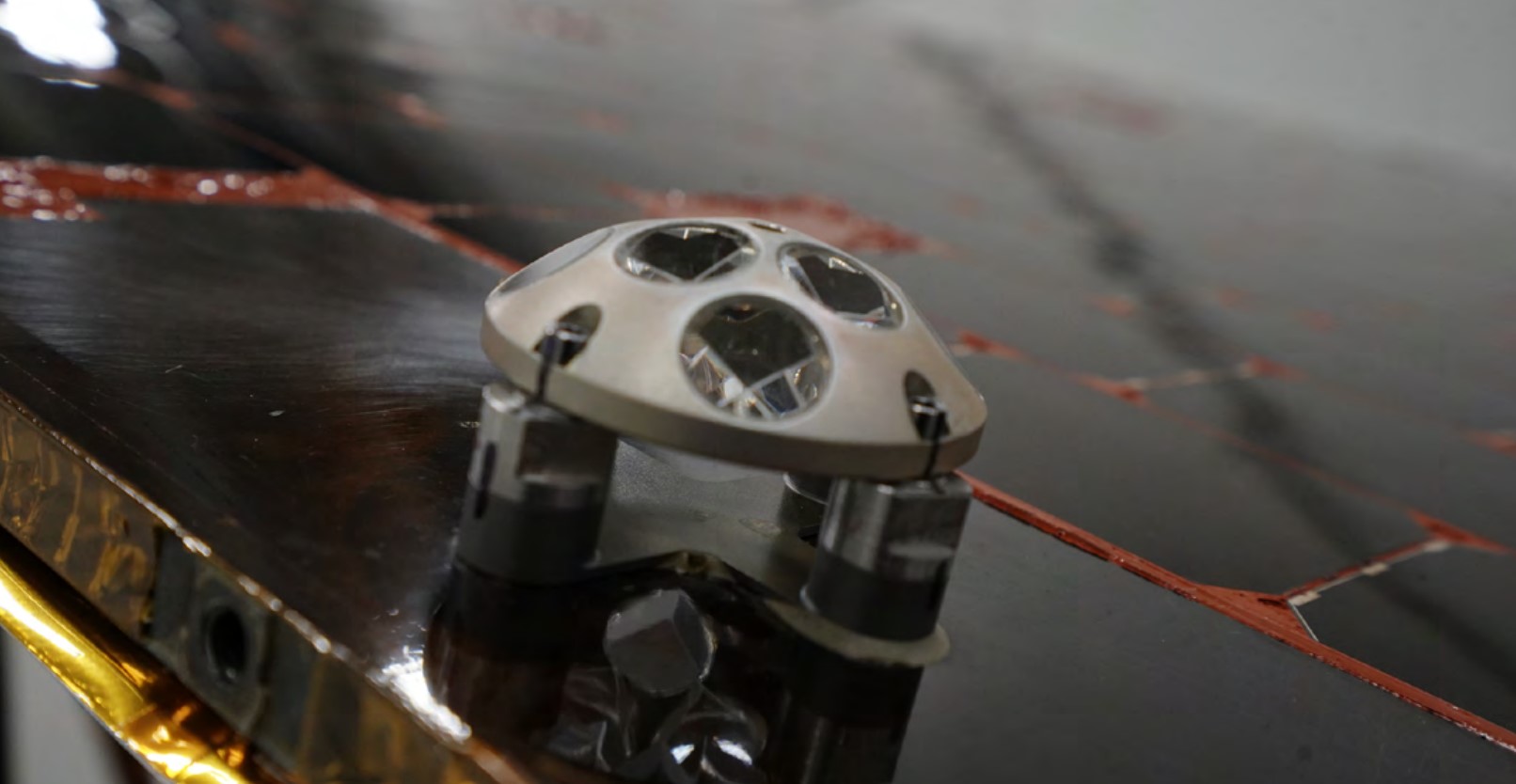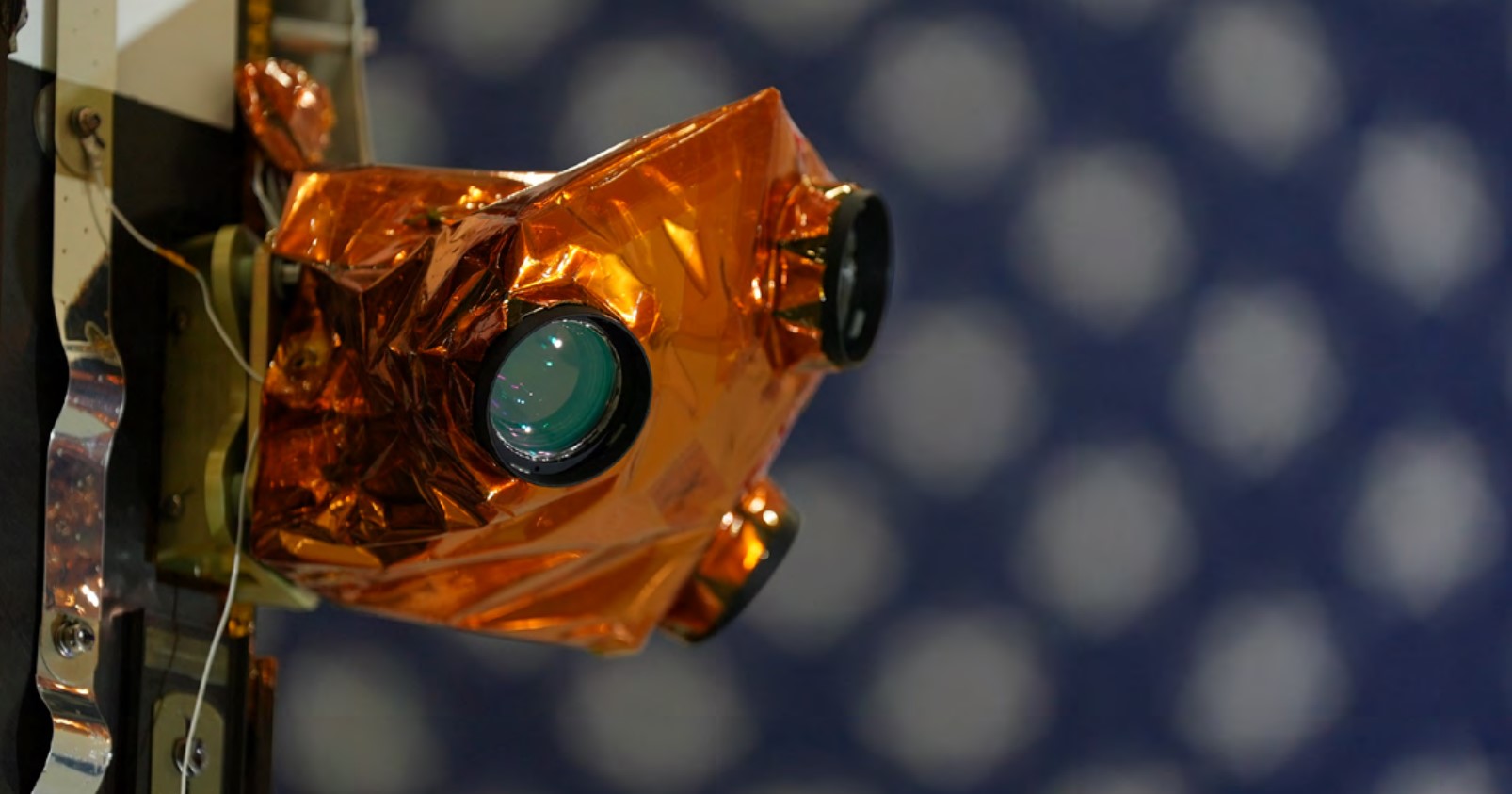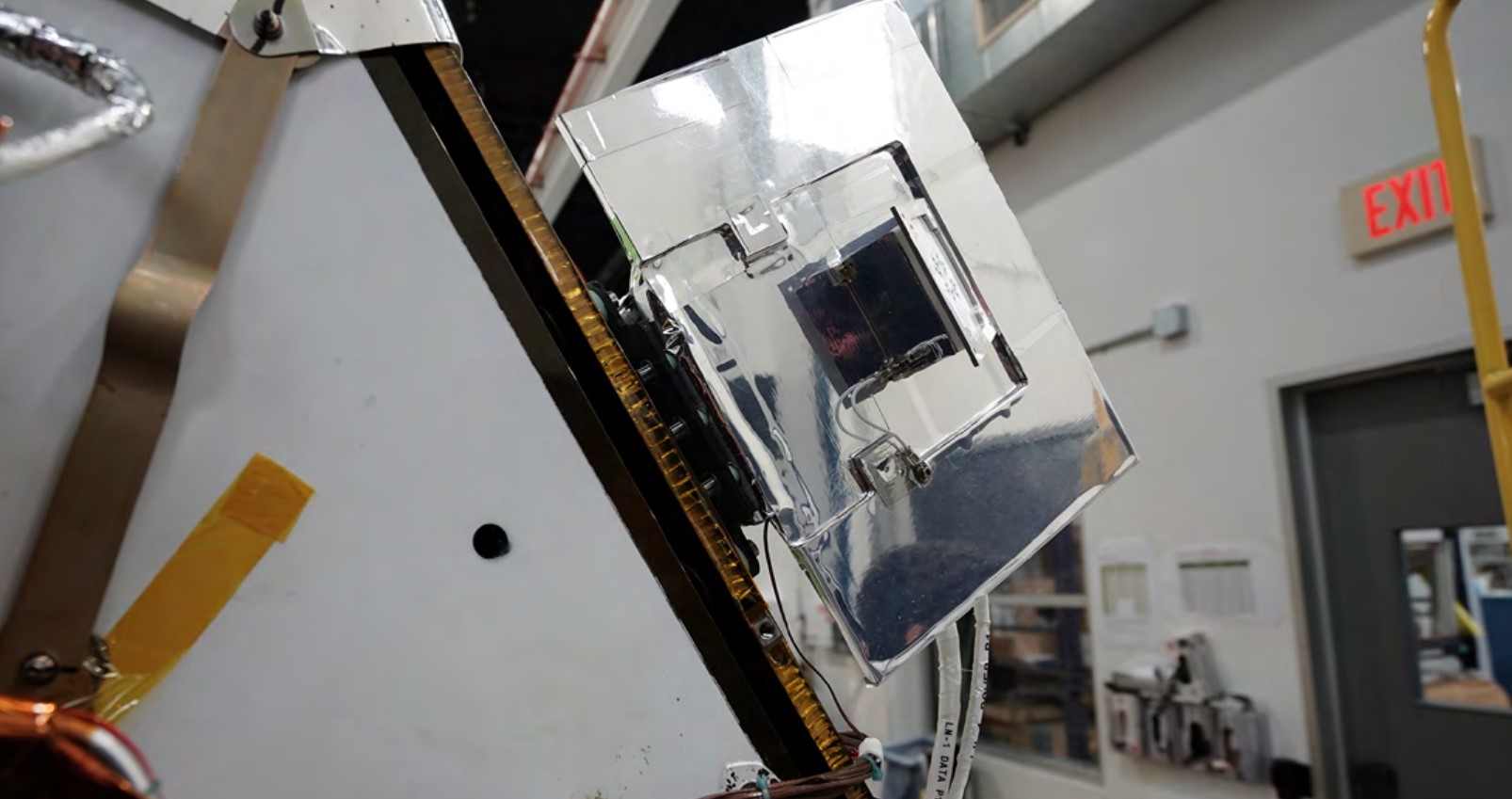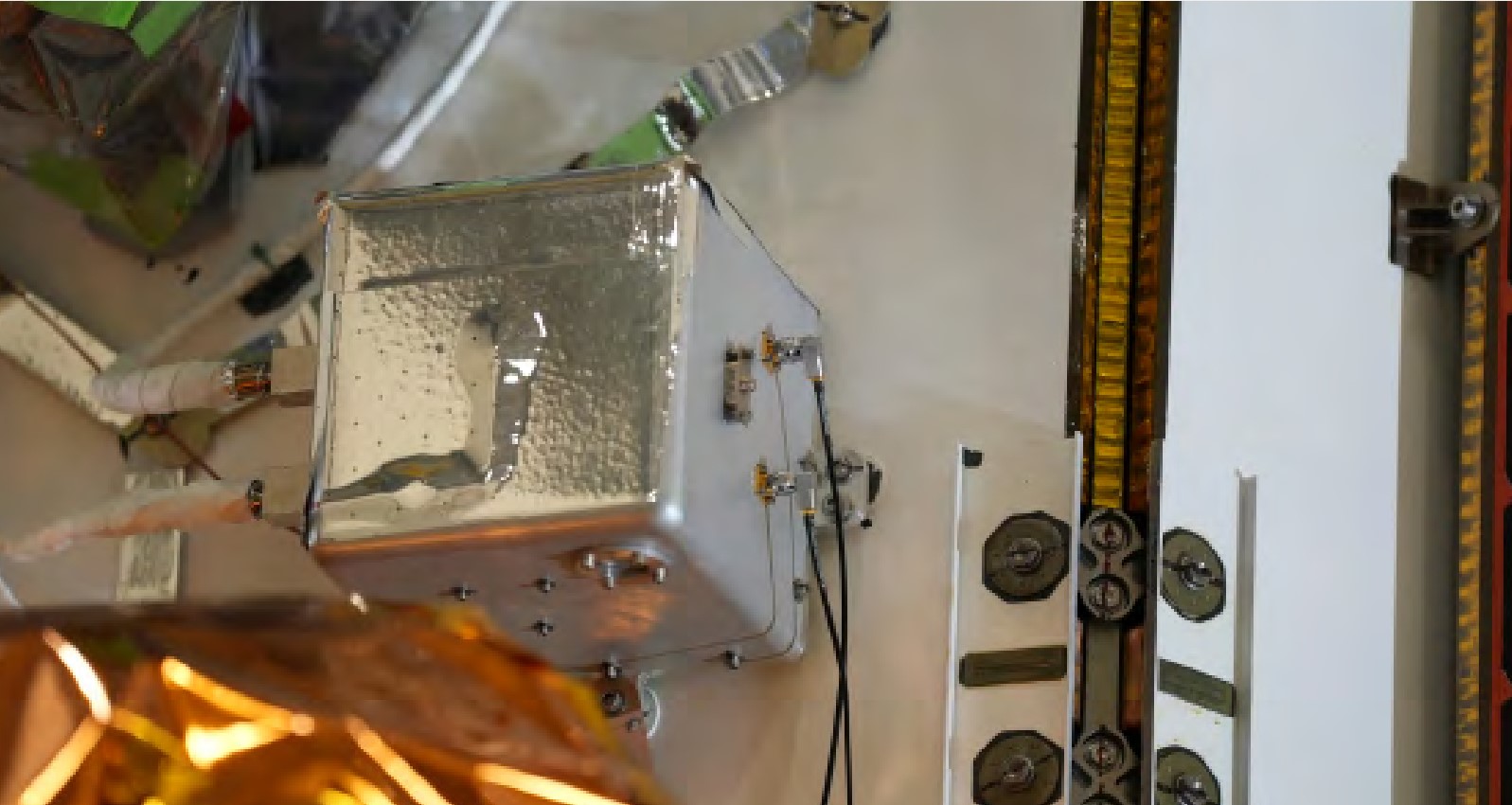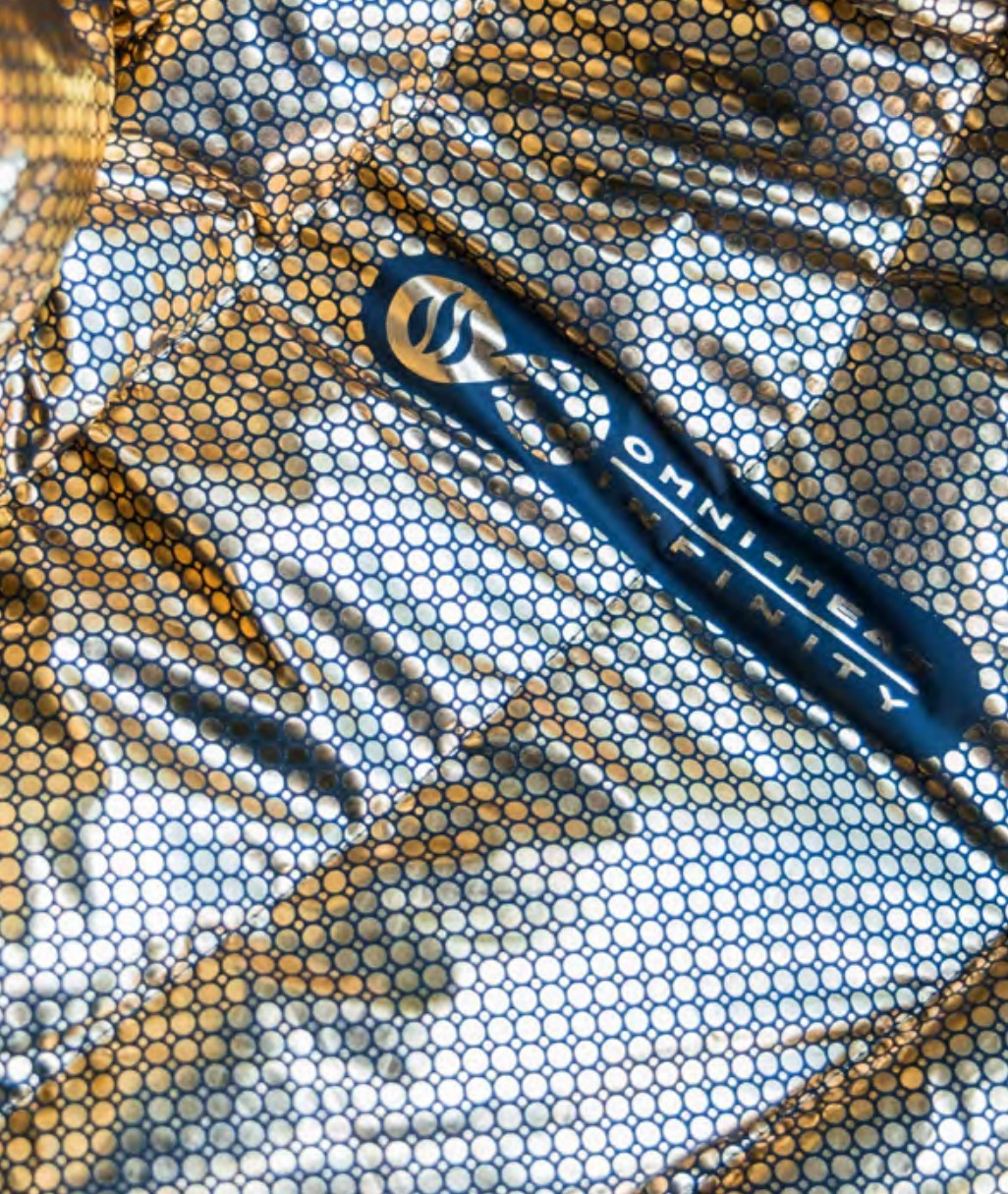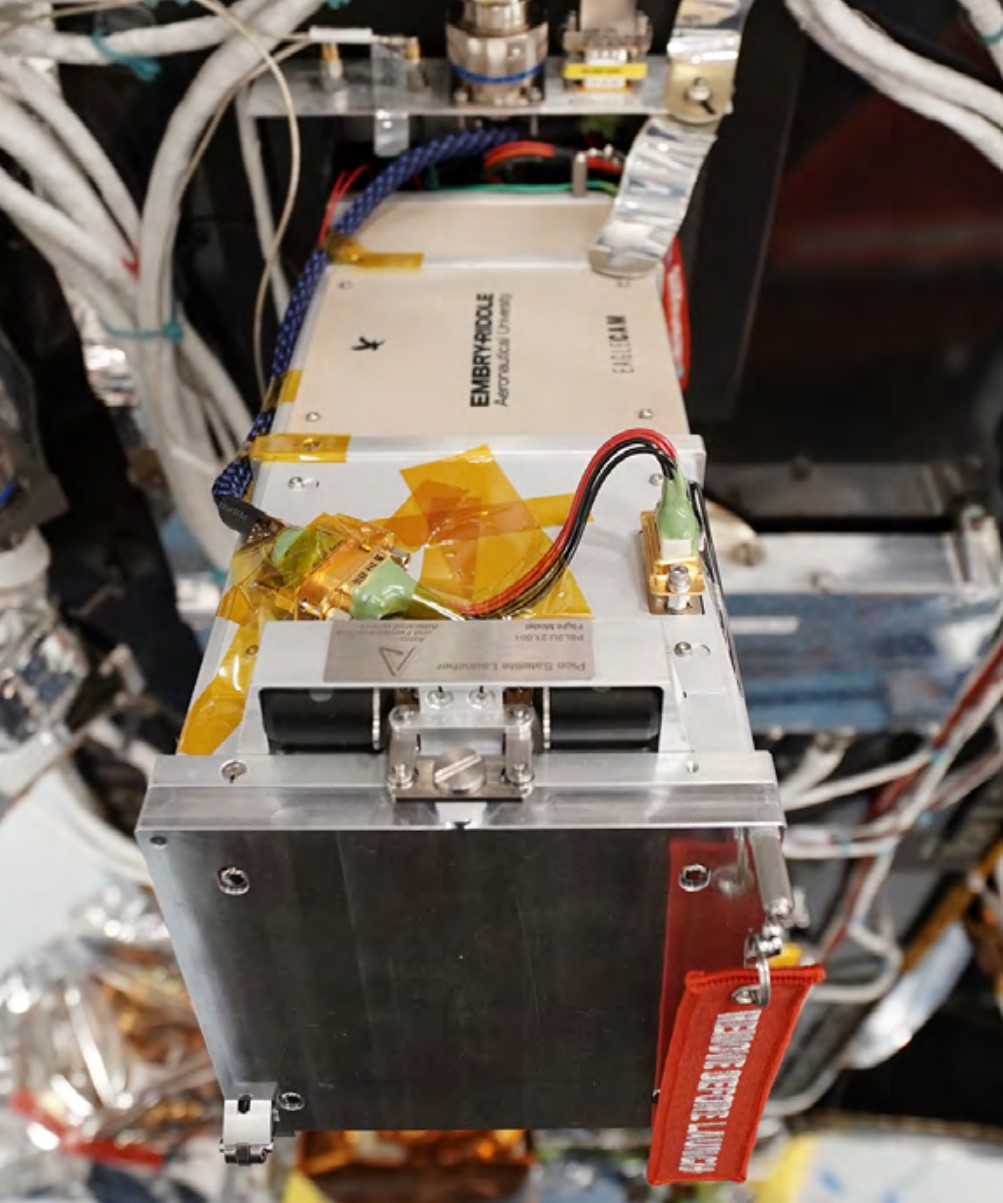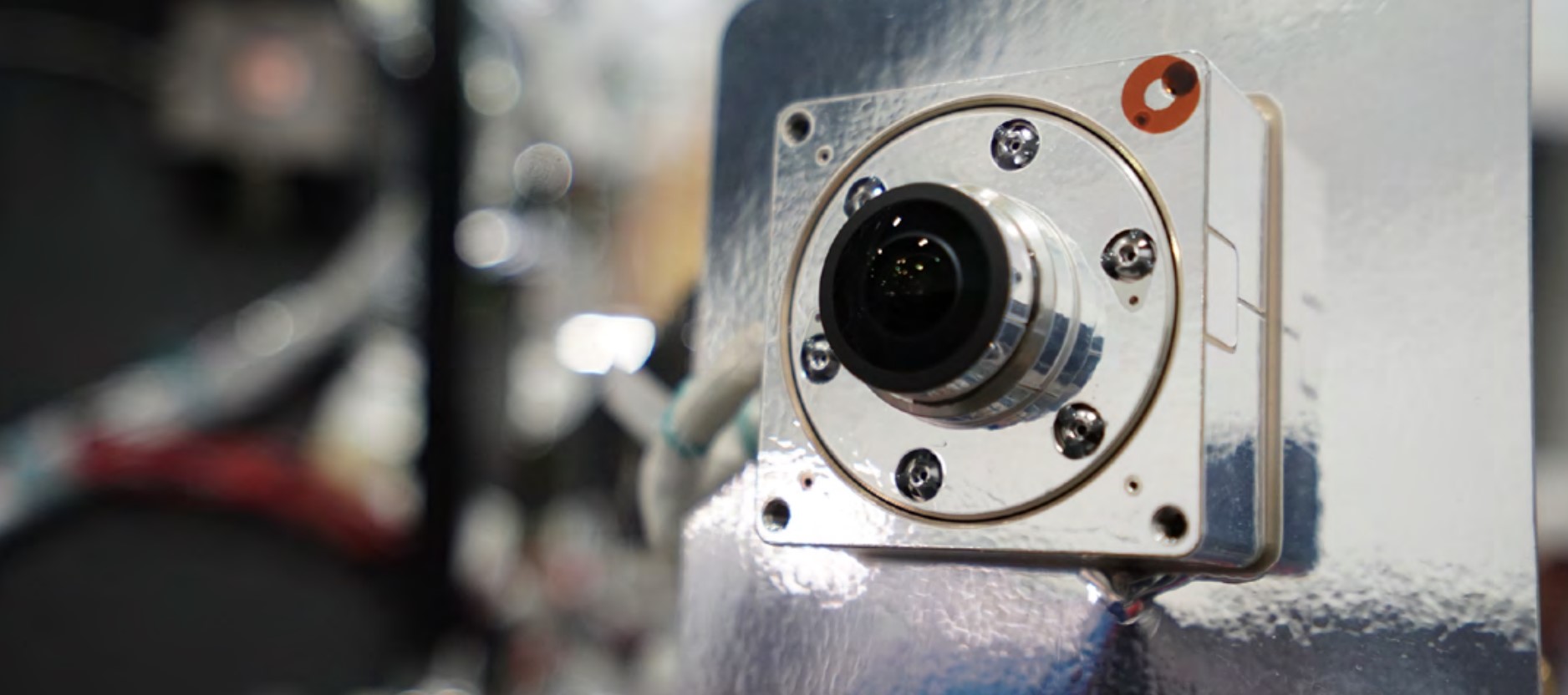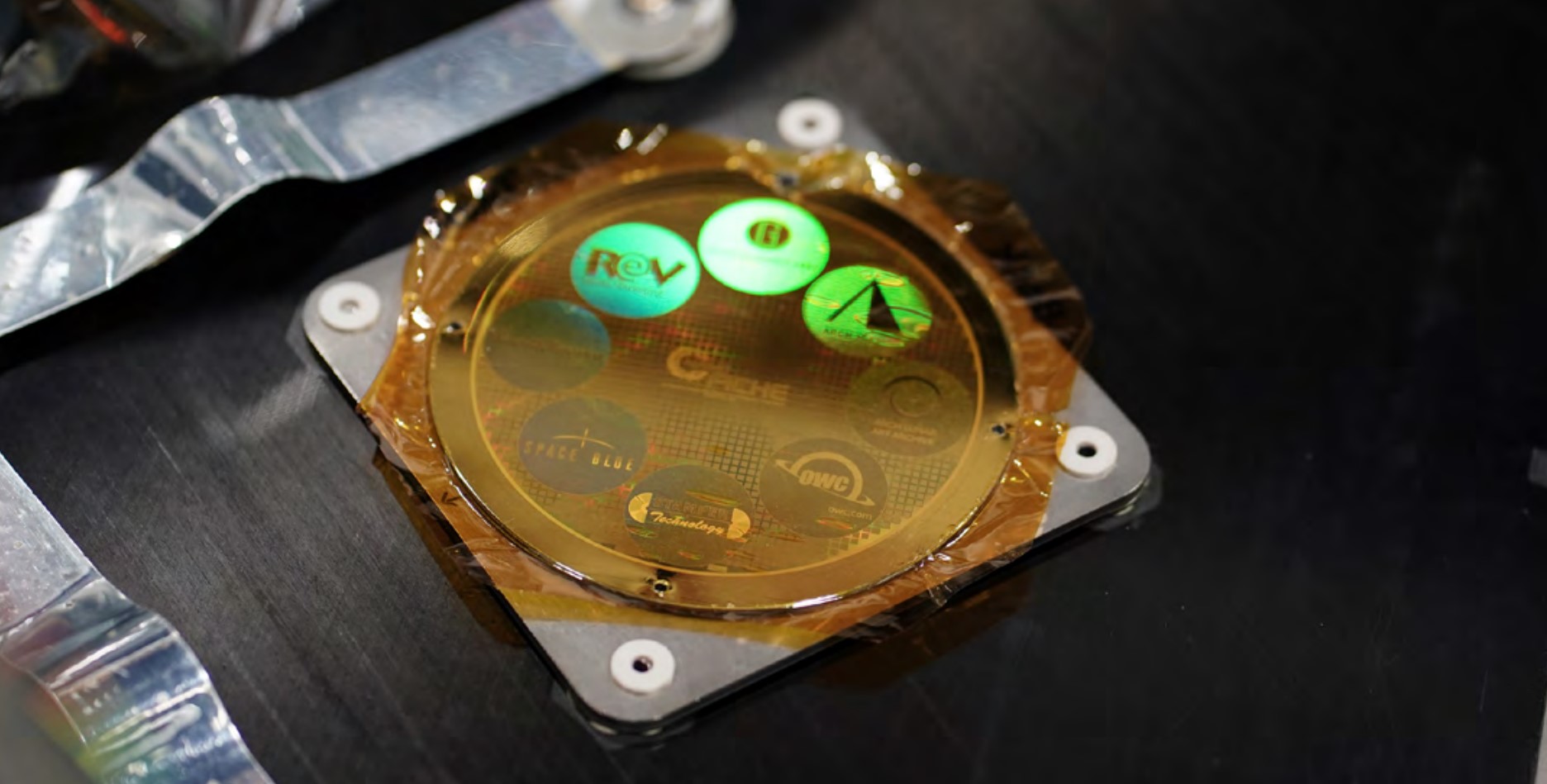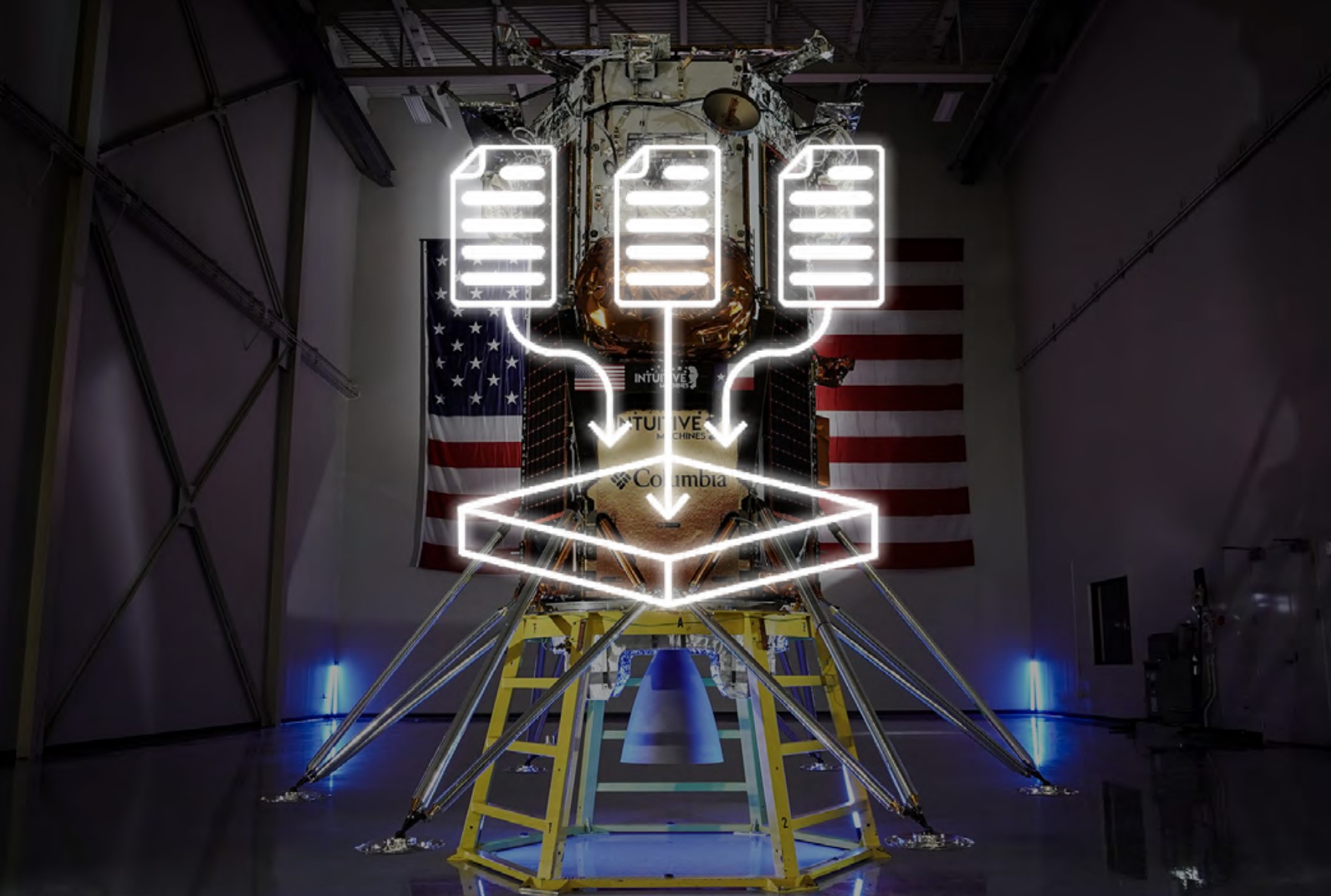Here's what just landed on the moon aboard Intuitive Machines' Odysseus lander
The private Nova-C lander, named Odysseus, is carrying a bunch of NASA and commercial science payloads.
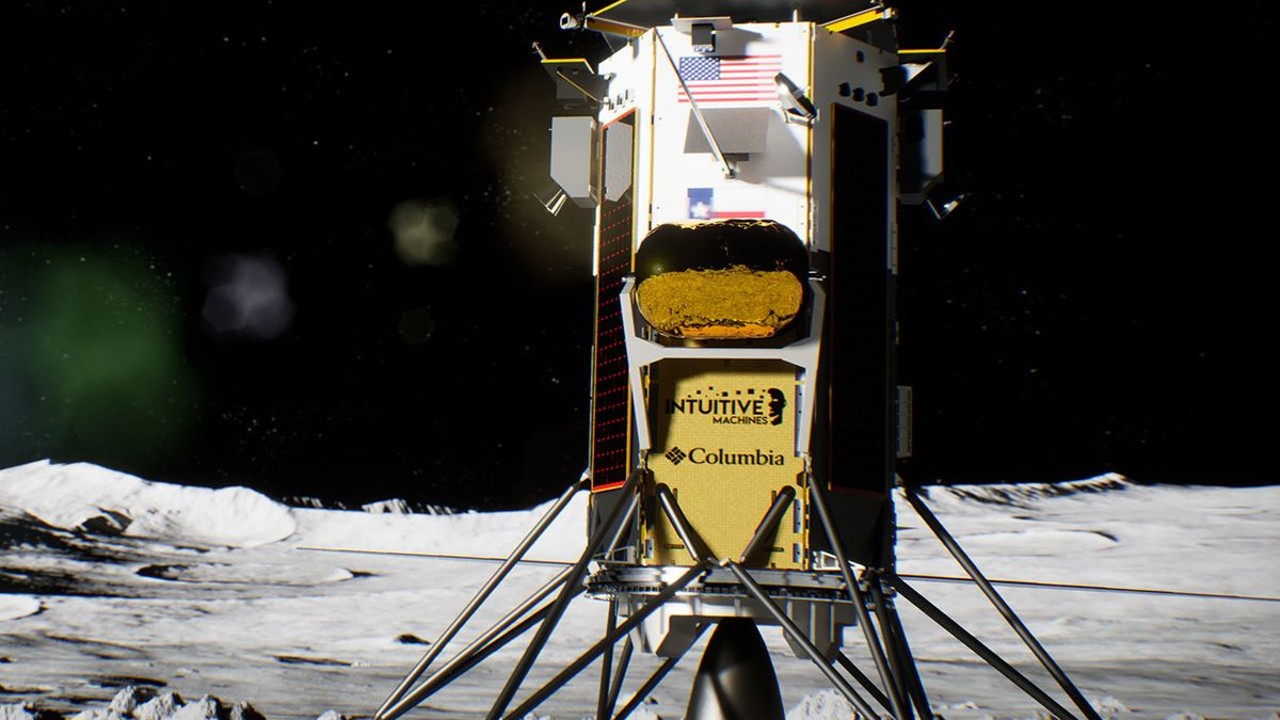
Update for 7 pm ET: Touchdown! Intuitive Machines reports that its IM-1 lander Odysseus has landed on the moon and is transmitting a faint, but definite, signal. "Houston, Odysseus has found his new home," mission director Tim Crain said.
See our full landing story, video and photos.

Want to observe the moon on your own? We recommend the Celestron Astro Fi 102 as the top pick in our best beginner's telescope guide.
Intuitive Machines' lander, named Odysseus, will try today (Feb. 22) to become the first private spacecraft ever to touch down softly on the moon. But what is the lander carrying?
The intrepid Odysseus entered lunar orbit on Wednesday (Feb. 21) and will make its historic landing attempt this afternoon no earlier than 6:24 p.m. EST (2324 GMT) near Malapert A, a small impact crater about 190 miles (300 kilometers) from the moon's south pole. You can watch the try live here at Space.com, courtesy of NASA, at 5 p.m. EST (2200 GMT).
The hexagonal-cylinder-shaped Nova-C series lander is loaded with a total 12 payloads from NASA and commercial companies, which will carry out diverse science tasks on the surface of the moon.
Related: Watch Intuitive Machines' Odysseus lander attempt historic moon landing
NASA payloads
Six NASA payloads are flying on Intuitive Machines' IM-1 commercial mission, as part of the agency's Commercial Lunar Payload Services program (CLPS) to aid the wider Artemis program of lunar exploration.
You can see what they are below.
Breaking space news, the latest updates on rocket launches, skywatching events and more!
ROLSES: Radio Observations of the Lunar Surface Photoelectron Sheath
ROLSES is a radio spectrometer for measuring the electron density near the lunar surface and how it may affect radio observatories, as well as observing solar and planetary radio waves and other phenomena.
"Since the moon does not have a global magnetic field to protect it, charged particles – from the solar wind, galactic cosmic rays, and solar flares – can make it to the lunar surface and create a plasma environment on the lunar surface that will levitate fine dust particles," Intuitive Machines wrote in an overview. "The plasma environment measurements will provide critical information for Artemis astronauts, and the design of rovers, space suits and other exploration systems. ROLSES measurements of radio emissions from the sun, planets, the galaxy, and even how radio noisy the Earth is will also provide a much-needed baseline for future sensitive lunar radio astronomy systems."
LRA: Laser Retro-Reflector Array
LRA is a small, passive hemisphere containing eight approximately 0.5-inch-wide (1.3 centimeters) retro-reflectors designed to reflect light directly back in the direction it came from. LRA will allow spacecraft to ping it with lasers to help them determine their precise distance for landings or location in lunar orbit.
"LRAs are valuable because they can continue to be used as precision landmarks for guidance and navigation during the lunar day or night," Intuitive Machines wrote in a mission description. "A few LRAs surrounding an Artemis landing site or base camp can serve as precision landmarks to guide the arriving landers by aiding in autonomous and safe landing."
NDL: Navigation Doppler Lidar for Precise Velocity and Range Sensing)
A light detection and ranging (LIDAR) payload for determining precise altitude and speed during landing. The system could help enhance spacecraft capabilities in precision navigation and making controlled lunar landings.
"This instrument operates on the same principles of radar, similar to a police radar detector, but uses pulses of light from a laser instead of radio waves and with very high accuracy," Intuitive Machines wrote. "This will enhance the capabilities of space vehicles to execute precision navigation and controlled soft landings."
SCALPSS: Stereo Cameras for Lunar Plume-Surface Studies
SCALPSS consists of four tiny cameras near the base of Odysseus. These will capture images and footage of the landing to help understand how exhaust from the lander's engines interacts with the lunar surface. Accelerated dust could pose a threat to nearby spacecraft and habitats on the moon.
"This information is critical for validating predictive models on how particles on the lunar surface are moved by rocket engine exhaust and allows scientists to analyze the close-up imagery of the surface of the moon," Intuitive Machines said in an overview. "Data from SCALPSS can be used for future Artemis vehicle designs to ensure the safety of both the landers and any other surface assets nearby during landing."
LN-1: Lunar Node 1 Navigation Demonstrator
LN-1 is a cubesat-sized S-band radio navigation beacon that will demonstrate autonomous spacecraft positioning to support future lunar operations. It weighs just 3 kilograms and is 22 cm by 33 cm by 11 cm.
"This experiment will leverage NASA’s Deep Space Network (DSN) for one-way ranging and Doppler tracking to provide a real-time position like how GPS works on Earth," Intuitive Machines wrote. "As future Artemis communication and navigation network systems are developed, hardware like LN-1 and its capabilities could be part of a much larger infrastructure."
RFMG: Radio Frequency Mass Gauge statement
RFMG is a payload designed to precisely measure the amount of propellant in spacecraft tanks using radio waves and antennae. The system could be useful for long-duration missions and could help support NASA's Artemis program
"These propellants are highly efficient but are tricky to store as they can evaporate quickly, even at low temperatures," Intuitive Machines wrote in a mission overview. "Being able to accurately measure spacecraft fuel levels will help scientists maximize resources as NASA moves toward its goal of returning humans to the moon through Artemis."
Commercial payloads
NASA isn't the only passenger riding aboard Intuitive Machines' IM-1 mission.
The mission's Odysseus lander is also carrying six commercial payloads to the lunar south pole. Here's what they are.
Columbia Sportswear
Columbia is testing its Omni-Heat thermal reflective technology on the lander's A2 closeout panel to protect Nova-C's cryogenic propulsion tank.
"Originally inspired by space blankets on Apollo missions, the same Omni-Heat Infinity technology found in jackets on Earth will help protect the Nova-C lunar lander from the extreme temperatures of outer space," Intuitive Machines wrote in a mission overview. "Thermal modeling revealed that Omni-Heat Infinity provides a benefit for heat reflection when used as a panel covering, and that is where the technology will be used on Nova-C. Intuitive Machines engineers incorporated Columbia’s Omni-Heat Infinity thermal reflective technology onto NovaC’s A2 closeout panel to protect Nova-C’s cryogenic propulsion tank."
Embry-Riddle Eaglecam
Eaglecam is a cubesat-sized payload designed to capture the first-ever "third-person" image of a spacecraft making a lunar landing. Eaglecam, developed by students at Embry-Riddle Aeronautical University, will deploy from Odysseus about 100 feet (30 meters) above the lunar surface and capture the moment of touchdown.
"Additionally, the device will test an electrostatic dust-removal system, which could lead to future advances in spacesuit technology," Intuitive Machines wrote of the device.
Jeffrey Koons' 'Moon Phases' art
Artist Jeff Koons is sending 125 miniature stainless steel Moon Phase sculptures, each honoring significant human achievements across cultures and history, to be displayed on the moon in a cube.
"The 125 miniature stainless steel Moon Phase sculptures will be displayed on the Moon in a cube, which was designed and built by 4Space in consultation with Koons," Intuitive Machines wrote in a desciption. "The Moon Phase artworks are associated with individuals who made important accomplishments in human history. The list of names is universal, from various cultures throughout the world, fields, and time periods. Displayed in front of each artwork, the names memorialize the figures. In this way, Koons honors some of the greatest achievements of the past to inspire future generations."
ILO-X
A dual-camera lunar imaging system and a precursor to the future International Lunar Observatory Association (ILOA) Hawaii flagship Moon South Pole Observatory, ILO-1. ILO-X will test and verify systems and conduct astronomy, including capturing images of the Milky Way.
"This mission will be the first Hawai'i-based organization’s cameras on the moon," Intuitive Machines wrote. "The ILO-X narrow-field camera was given the name Ka‘Imi (The Search) after a Hawai’i student naming contest. Receiving this name from the next generation of scientists of Hawaiʻi is a great honor and celebration of the unique communities and knowledge that exists on the Hawaiian Islands of which ILOA calls home."
Lunaprise
A time capsule containing "lunagram" messages etched on pure nickel nanofiche. The aim is to create a secure lunar repository to preserve human knowledge indefinitely as part of Arch Mission Foundation's billion-year archive.
The payload was organized by Galactic Legacy Labs LLC in collaboration with Space Blue and Arch Mission Foundation.
"The Lunaprise mission's cornerstone is an indestructible time capsule designed to preserve humanity's cultural heritage and knowledge," Galactic Legacy Labs wrote in a description. "This innovative archive, capable of enduring a billion years, is a testament to our civilization's legacy, ensuring that the essence of human achievement and wisdom is safeguarded against the ravages of time and space, etching our story indelibly on the moon's surface."
Independence
Cloud computing startup Lonestar's Independence payload is a lunar data center test mission for data storage and transmission from the lunar surface.
"Lonestar's Independence payload represents a key technology demonstration of the company’s Disaster Recovery as a Service (DRaaS) utilizing the unique operational properties offered from the moon," Intuitive Machines wrote. "Working with Intuitive Machines, Lonestar is storing digital data on board the Nova-C lander for its customers and transmitting the first documents off planet for data storage to the moon while in turn transmitting the first documents back from the moon."
This story was updated at 2:36 p.m. Feb. 22 with the updated landing time.

Andrew is a freelance space journalist with a focus on reporting on China's rapidly growing space sector. He began writing for Space.com in 2019 and writes for SpaceNews, IEEE Spectrum, National Geographic, Sky & Telescope, New Scientist and others. Andrew first caught the space bug when, as a youngster, he saw Voyager images of other worlds in our solar system for the first time. Away from space, Andrew enjoys trail running in the forests of Finland. You can follow him on Twitter @AJ_FI.

